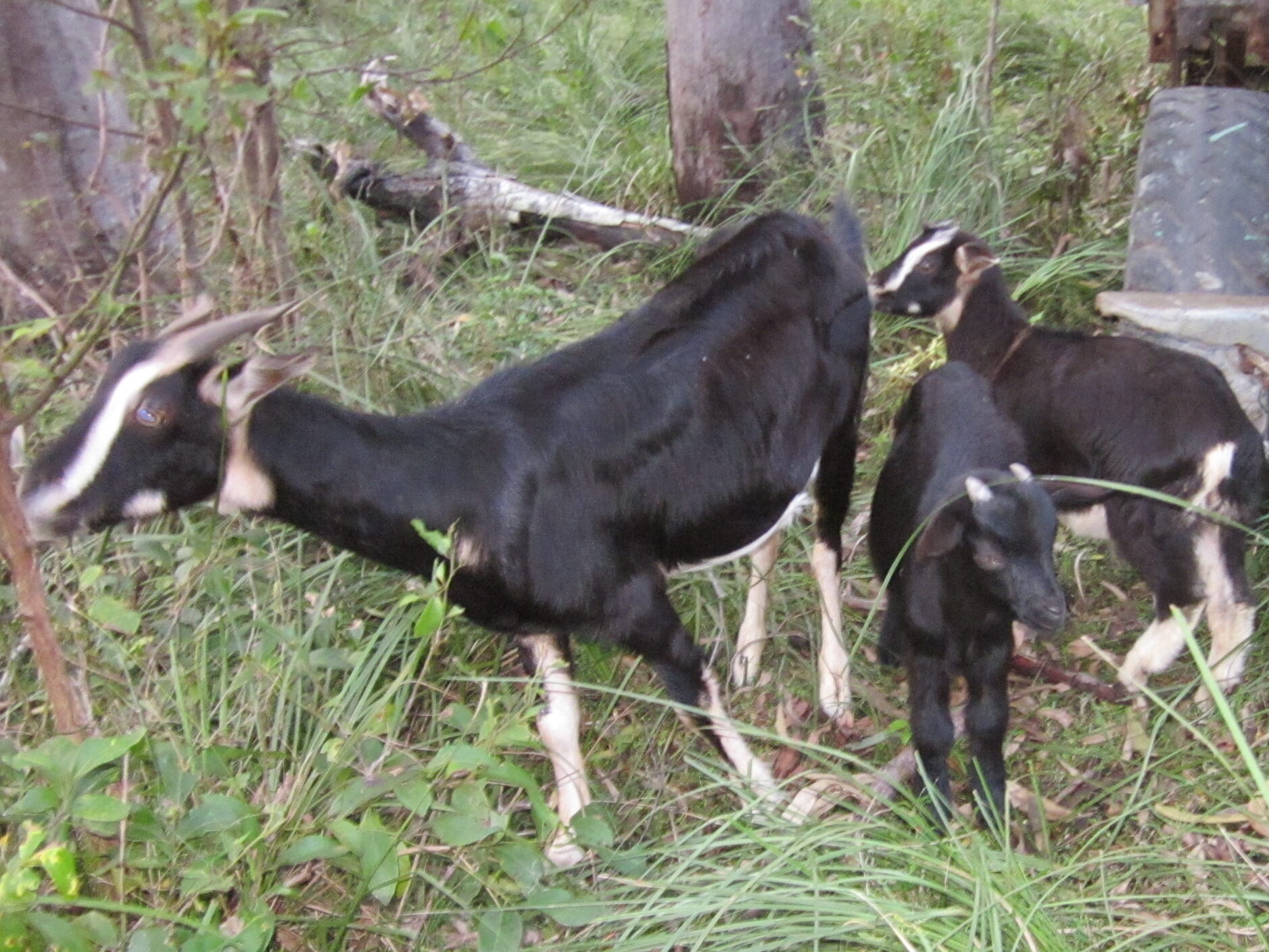The Colonial Percy Island Goats have a unique DNA and are recognized as a heritage breed by the Australian All Breeds of Miniature Goat & Sheep Society Inc. www.aabmgs.org.au-colonial-percy-island-goats.html and Rare Breeds Trust of Australia.
Hunting is NOT permitted. Percy Island is open to seafarers and bush walkers, only the Percy Island residents are permitted to manage population numbers of the goats (and introduced marsupials) in order to maintain and protect the environment from overgrazing. Goats and kangaroos are selected according to age and sex, by continuous control that is carried out in specific areas of the island, well away from bush walkers and in a practical and controlled manner.

Middle Percy Island goats; a black & white Doe can have different coloured kids according to Sires’ colouration.
The goats were introduced to the Island by the Royal Navy in 1874 by Staff Commander Bedwell of the HM schooner ‘Pearl’, who was given the mission of leaving goats and planting coconuts and other edible fruits from the Brisbane Botanical Gardens, up the East Coast and the Islands, in order to provide food stocks for passing vessels plying the Queensland coast.
European settlement was established two years later, in 1876, and the goats utilized by the Island residents to provide themselves and visitors meat, milk and skins for over 130 years.
The first goat herd recorded as being domesticated was by Jimmy Joss, Mason and Smith. These men were rumored to have been searching for gold on the Island but ended up bartering and selling produce to the passing vessels. They requested the first Government Leasehold of the Island in 1875 as they had built their home, gardens and animal paddocks behind the tidal lagoon at West Bay. Interestingly this was the lifestyle envisaged by Captain Mathew Flinders when he named the Island in 1802.
In 1887 the Armitage family took over the Lease, as coffee growers, and had the Homestead built near the top of the Island, close to the water source. In 1921 the White family, from Canada via New Zealand, managed to make a living sheep farming. They cleared the land by ring-barking trees to make paddocks for 2,000 head of sheep, a few cattle and horses.
The next permanent Island resident arrived in 1964, being Andrew Martin, he purchased the remainder of the Pastoral Lease under the Lands Act. The sheep market declined, so he chose to manage the Rangeland goats and to again provide food and skins to the new breed of mariner; the cruising yachties and fishermen.
The Island is now under the Nature Conservation Act which has many categories of protection, Middle Percy Island is managed by the Percy Island Conservation Group Inc.
